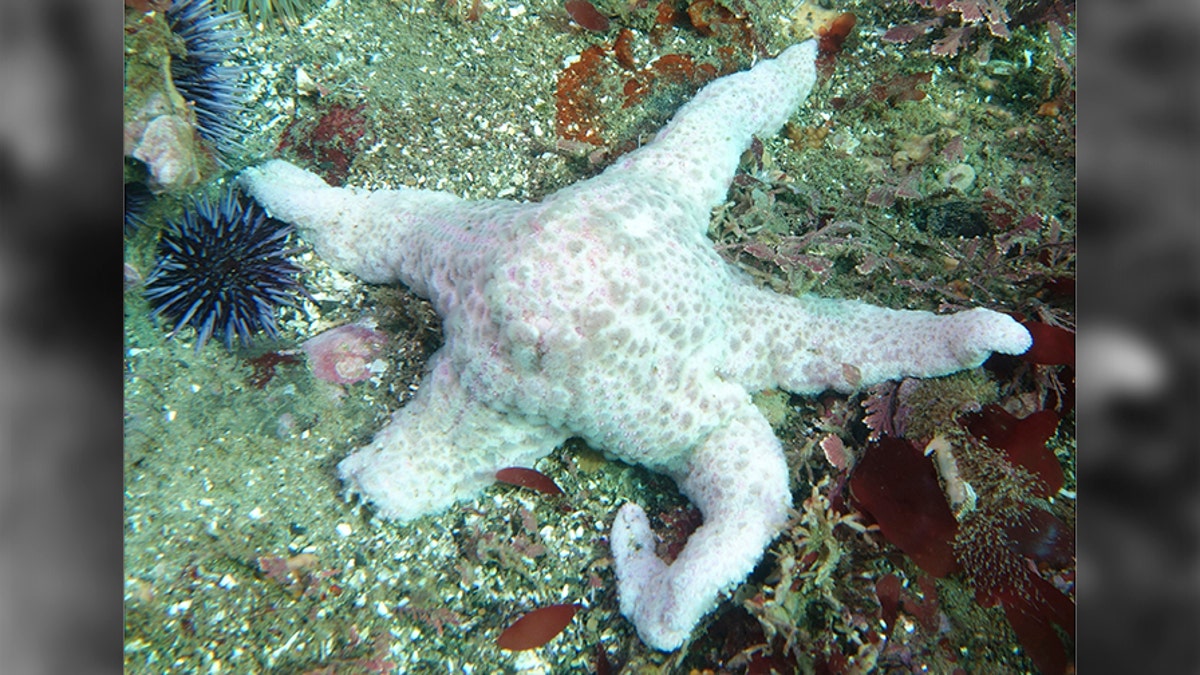
Starfish are making a comeback on the West Coast, four years after a mysterious syndrome killed millions of them. (AP Photo/Rick Bowmer)
Starfish are fighting their way back to the West Coast, years after a mysterious syndrome killed millions of them.
A catastrophic number of the sea creatures were killed around 2013-2014 by Sea Star Wasting Syndrome. Starfish from British Columbia to Mexico would develop lesions and then disintegrate, with their arms turning into goo.

This photos shows a starfish suffering from a wasting disease epidemic is shown in this handout photo courtesy of Kevin Lafferty of the United States Geological Survey, provided November 17, 2014. (REUTERS/Kevin Lafferty/USGA.com)
But four years later, scientists have spotted starfish in Southern California tide pools, The Orange County Register reported.
From Crystal Cove State Beach to Palos Verdes, “They are coming back, big time,” Darryl Deleske, aquarist for the Cabrillo Marine Aquarium in San Pedro, told the newspaper.
“It’s a huge difference…A couple of years ago, you wouldn’t find any. I dove all the way as far as Canada, specifically looking for sea stars, and found not a single one,” Deleske added.
STARFISH RIPPED APART BY MYSTERIOUS DISEASE
Similar die-offs of starfish on the West Coast were reported in the 1970s, '80s and '90s, but the latest outbreak was the largest-ever recorded, according to the Register.
When the syndrome hit the Southern part of the state in December 2013, Deleske said “you just started to see [starfish] melt everywhere. You’d see an arm here, an arm there.”
But, just this month, four adult sea stars — each about 7 to 8 inches long — were spotted at Crystal Cove State Park in Newport Beach.
KILLER ROBOT IS COMING AFTER YOU, KILLER STARFISH
"It's a treasure we always hope to find,” Kaitlin Magliano, education coordinator at the Crystal Cove Conservancy, told The Orange County Register. "We lost all of them. It's good to see we have some surviving and thriving. Maybe the next generation will be more resilient."
Despite recent spottings, the Sea Star Wasting Syndrome never completely disappeared in Northern and Central California and it has reappeared in the Salish Sea region of Washington state, according to a November report by the University of Santa Cruz.
